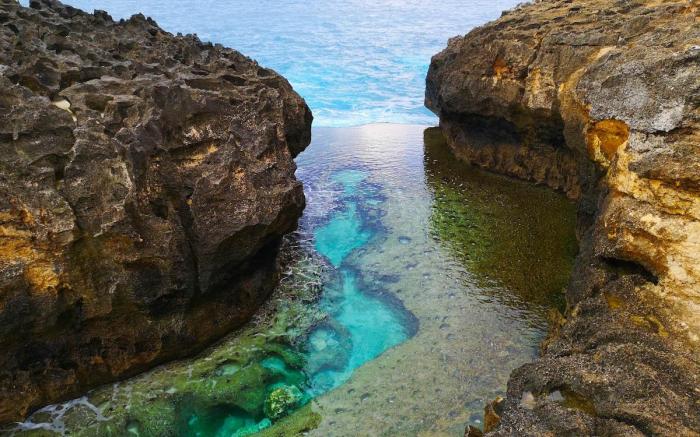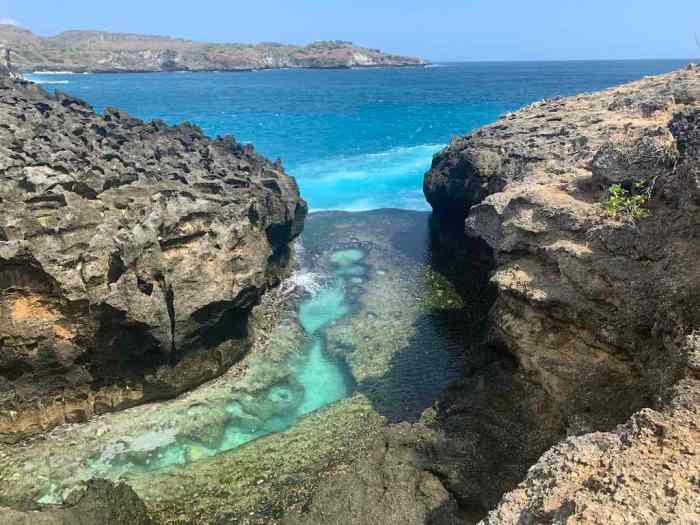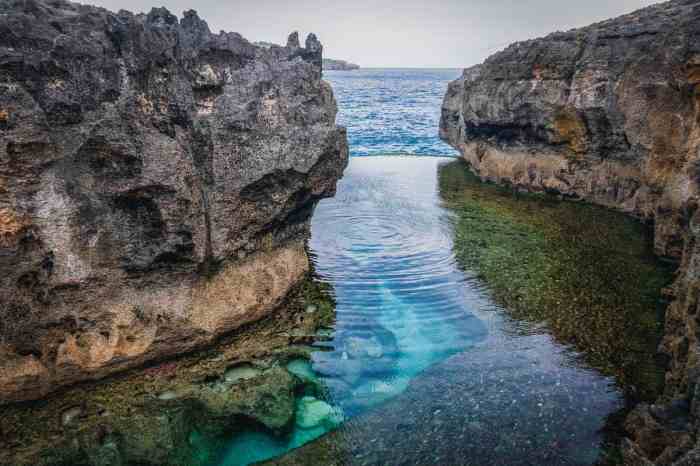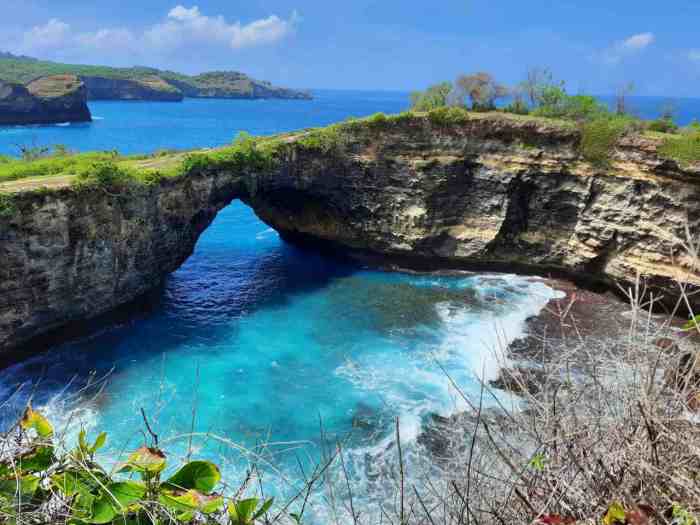Step into the realm of Angel Billabong, where surf culture and style intertwine. From its iconic name to its cutting-edge products, Angel Billabong has left an indelible mark on the surfing world, capturing the essence of freedom, adventure, and the pursuit of perfect waves.
The “Angel” moniker holds a special significance in Billabong’s surf culture, embodying the grace and fearlessness of those who ride the waves. Famous surfers like Stephanie Gilmore and Sally Fitzgibbons have proudly carried the “Angel” name, showcasing their talent and embodying the spirit of the brand.
Billabong Surf Culture

The Angel Billabong, a picturesque natural pool in Litchfield National Park, offers a refreshing escape. Explore its crystal-clear waters and serene surroundings. If you’re seeking more nearby attractions, check out attractions near me for a comprehensive list of nearby destinations.
Whether you prefer hiking trails, cultural landmarks, or hidden gems, you’re sure to find something to captivate your senses and make your trip to the Angel Billabong even more memorable.
Origins of the “Angel” Name
The “Angel” name in Billabong’s surf culture is said to have originated from the nickname given to Gordon Merchant, a renowned surfer from the 1960s. Merchant was known for his graceful and effortless surfing style, which earned him the nickname “Angel of the North Shore.” The “Angel” moniker has since become synonymous with Billabong’s surf team, representing the company’s commitment to promoting talented surfers and showcasing the sport’s artistry and athleticism.
Famous Surfers Associated with the “Angel” Moniker
- Mick Fanning: Three-time World Surf League (WSL) champion, known for his aggressive and progressive surfing style.
- Stephanie Gilmore: Seven-time WSL champion, renowned for her technical prowess and stylish surfing.
- Gabriel Medina: Two-time WSL champion, recognized for his innovative and high-performance surfing.
Significance of the “Angel” Image in Billabong’s Branding
The “Angel” image has become an integral part of Billabong’s branding, symbolizing the company’s core values and its dedication to the sport of surfing. The image is often featured in Billabong’s marketing campaigns, product designs, and retail stores, reinforcing the company’s association with the surfing lifestyle and its commitment to supporting the surfing community.
Billabong Product Line

The “Angel” label by Billabong Surf Culture encompasses a comprehensive range of products designed to meet the diverse needs of water enthusiasts. From cutting-edge wetsuits and swimwear to stylish accessories, the “Angel” line seamlessly blends functionality with fashion.
The crystal clear waters of Angel Billabong invite you to immerse yourself in a serene aquatic paradise. After your refreshing dip, head to desa potato head , a captivating beach club that blends art, culture, and sustainable living. Immerse yourself in the vibrant atmosphere, indulge in delectable cuisine, and dance the night away under the twinkling stars.
As you return to Angel Billabong, the gentle sound of waves crashing against the shore will lull you into a tranquil slumber, leaving you refreshed and rejuvenated for another day in this tropical paradise.
Wetsuits, Angel billabong
The “Angel” wetsuits are meticulously crafted to provide exceptional warmth, flexibility, and durability. They utilize advanced materials like premium neoprene and flexible seams to ensure a comfortable and unrestricted range of motion. The wetsuits feature innovative designs, including ergonomic paneling and contoured fits, that enhance performance and minimize water penetration.
Swimwear
The “Angel” swimwear collection exudes style and functionality. The swimwear pieces are made from high-quality fabrics that are both durable and quick-drying. The range includes a variety of designs, from classic cuts to modern silhouettes, catering to different preferences and body types.
The swimwear features vibrant colors, unique patterns, and intricate details that add a touch of glamour to beachwear.
Accessories
The “Angel” accessories complement the wetsuits and swimwear, completing the surfer’s wardrobe. The range includes essential items like caps, sunglasses, and beach towels, all designed with the same attention to detail and style. The accessories feature the iconic “Angel” logo, adding a touch of brand recognition to every outfit.
Marketing and Distribution

Billabong’s marketing strategies for the “Angel” line have been tailored to appeal to the specific target audience and demographics of the products. The brand has utilized a combination of traditional and digital marketing channels to reach its desired consumers.
Target Audience and Demographics
The “Angel” line is primarily targeted at young women between the ages of 16 and 25. These consumers are typically fashion-forward, active, and have a strong sense of style. They are also likely to be avid users of social media and digital platforms.
Marketing Strategies
- Social Media Marketing:Billabong has a strong presence on social media platforms such as Instagram, Facebook, and TikTok. The brand uses these channels to engage with its target audience, share product updates, and showcase the “Angel” line in a visually appealing manner.
- Influencer Marketing:Billabong collaborates with influential individuals in the fashion and lifestyle space to promote the “Angel” line. These influencers create and share content featuring the products, which helps to generate buzz and reach a wider audience.
- Content Marketing:Billabong produces high-quality content, such as blog posts, articles, and videos, that provide valuable information to its target audience. This content is designed to educate, inspire, and entertain consumers while also promoting the “Angel” line.
- Email Marketing:Billabong uses email marketing to nurture relationships with its customers. The brand sends out regular emails featuring product updates, exclusive offers, and behind-the-scenes content.
- Traditional Advertising:Billabong also uses traditional advertising channels, such as print magazines and billboards, to reach its target audience. These advertisements typically feature visually striking images of the “Angel” line and highlight its key features and benefits.
Distribution Channels
The “Angel” line is sold through a variety of distribution channels, including Billabong’s own retail stores, authorized retailers, and online marketplaces. The brand has a global distribution network that ensures that the products are available to consumers in all major markets.
- Retail Stores:Billabong operates a network of retail stores in key locations around the world. These stores provide consumers with an immersive shopping experience and allow them to interact with the “Angel” line firsthand.
- Authorized Retailers:Billabong partners with authorized retailers to sell the “Angel” line in their stores. These retailers include department stores, specialty boutiques, and surf shops.
- Online Marketplaces:Billabong sells the “Angel” line through its own online store as well as through online marketplaces such as Amazon and Zalando. This allows consumers to purchase the products conveniently from anywhere in the world.
Environmental Impact: Angel Billabong

Billabong recognizes the importance of minimizing its environmental impact and has implemented several initiatives to reduce the footprint of its “Angel” line.
The company has adopted sustainable practices throughout the production process, using recycled materials and reducing waste. Billabong also promotes recycling and encourages customers to properly dispose of their products at the end of their lifespan.
Sustainable Materials
- Billabong uses recycled polyester, a durable and eco-friendly material made from plastic bottles.
- The company incorporates organic cotton, which is grown without pesticides or synthetic fertilizers, into its “Angel” products.
- Billabong also uses sustainable rubber from FSC-certified forests in its wetsuits and other products.
Waste Reduction
Billabong has implemented several measures to minimize waste in its production process.
- The company uses efficient cutting techniques to reduce fabric waste.
- Billabong has partnered with recycling facilities to divert waste from landfills.
- The company also offers repair services to extend the lifespan of its products.
Recycling
Billabong promotes recycling among its customers through various initiatives.
- The company has partnered with recycling programs to make it easy for customers to recycle their old Billabong products.
- Billabong offers incentives to customers who recycle their products.
- The company also educates its customers about the importance of recycling through its marketing and social media channels.
Competitors and Market Analysis

The global surfwear market is highly competitive, with several established brands vying for market share. Major competitors in the high-end surfwear segment include Rip Curl, Hurley, O’Neill, Quiksilver, and Volcom. Each of these brands has a loyal customer base and a strong presence in the industry.
Angel Billabong is an astounding natural wonder in Western Australia. If you’re planning a trip to the Pacific Northwest, consider exploring the vibrant city of Seattle. While there, don’t miss the opportunity to marvel at the breathtaking Angel Billabong, a testament to the incredible beauty of nature.
The “Angel” line from Billabong is positioned as a premium offering within the surfwear market. Compared to similar products from competing brands, the “Angel” line features unique designs, high-quality materials, and innovative construction techniques. The line includes a range of swimwear, apparel, and accessories designed to meet the needs of discerning surfers and beachgoers.
Market Share and Growth Potential
The market share of the “Angel” line within the surfwear industry is currently relatively small, but it has experienced steady growth since its launch. The line has gained a loyal following among high-end consumers who appreciate its unique aesthetic and premium quality.
The growth potential for the “Angel” line is significant, as there is a growing demand for high-quality, sustainable surfwear products.
Wrap-Up

As Angel Billabong continues to evolve, it remains a beacon of innovation and style in the surfwear industry. Its commitment to sustainability and its unwavering pursuit of excellence ensure that the “Angel” legacy will continue to inspire and empower surfers around the world.
Questions Often Asked
What is the origin of the “Angel” name in Billabong’s surf culture?
The “Angel” name originated from a group of surfers in the 1970s who were known for their exceptional surfing skills and fearless approach to riding waves.
What are the unique features of Angel Billabong’s wetsuits?
Angel Billabong’s wetsuits are designed with advanced materials and construction techniques to provide maximum flexibility, warmth, and durability in challenging surfing conditions.
How does Angel Billabong contribute to environmental sustainability?
Angel Billabong uses sustainable materials, such as recycled fabrics and eco-friendly dyes, in its production processes. The brand also supports initiatives to reduce waste and promote recycling.